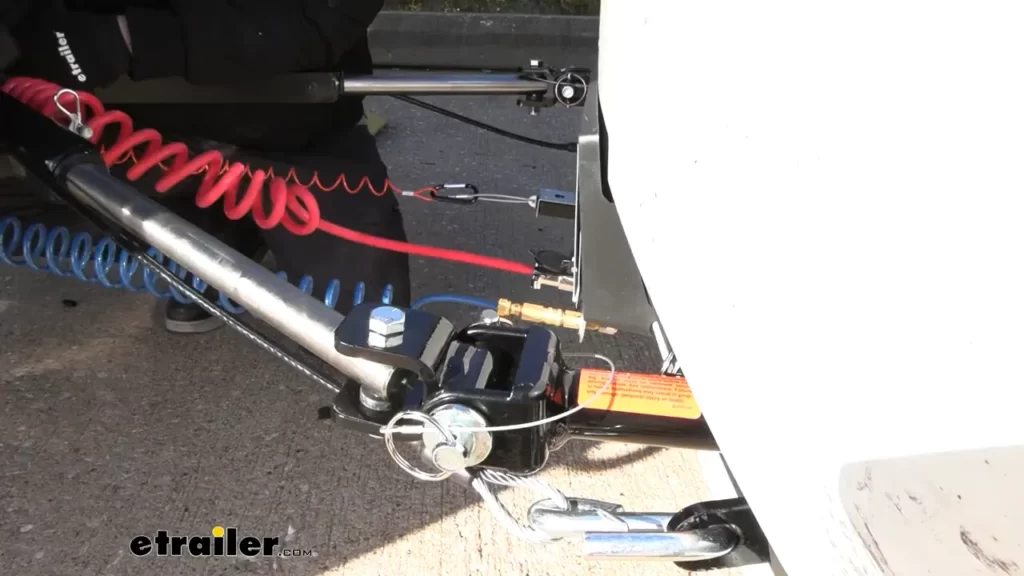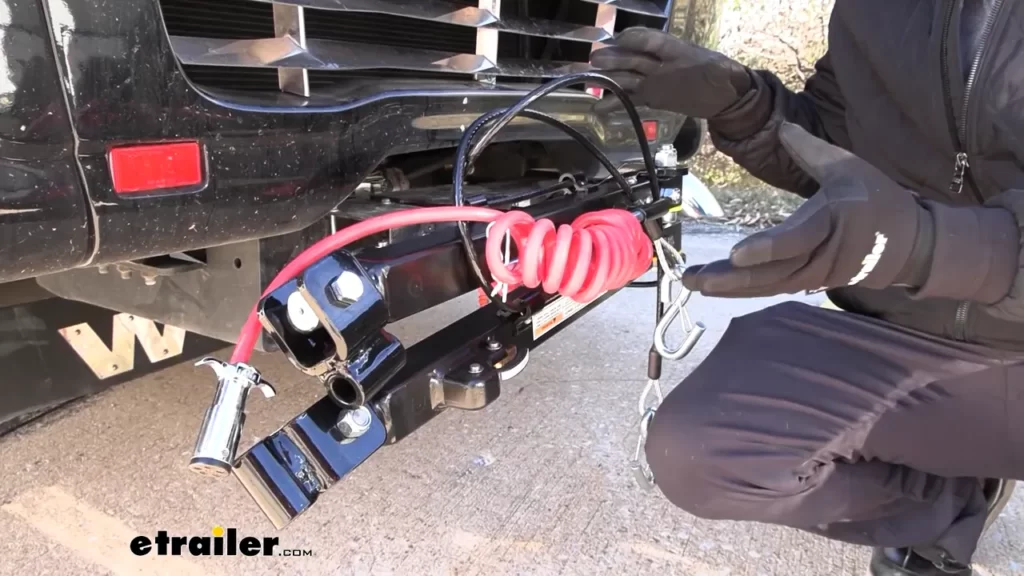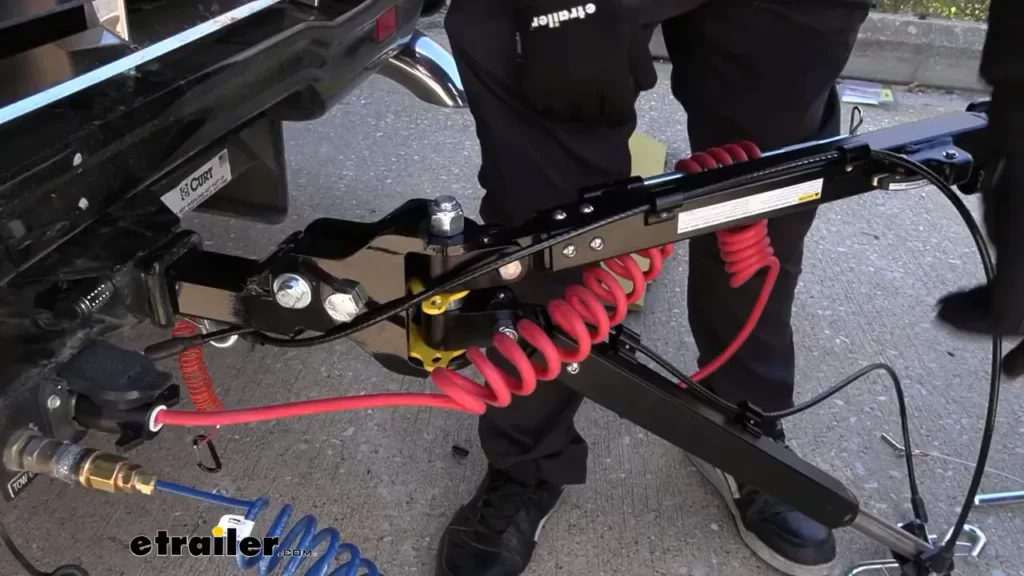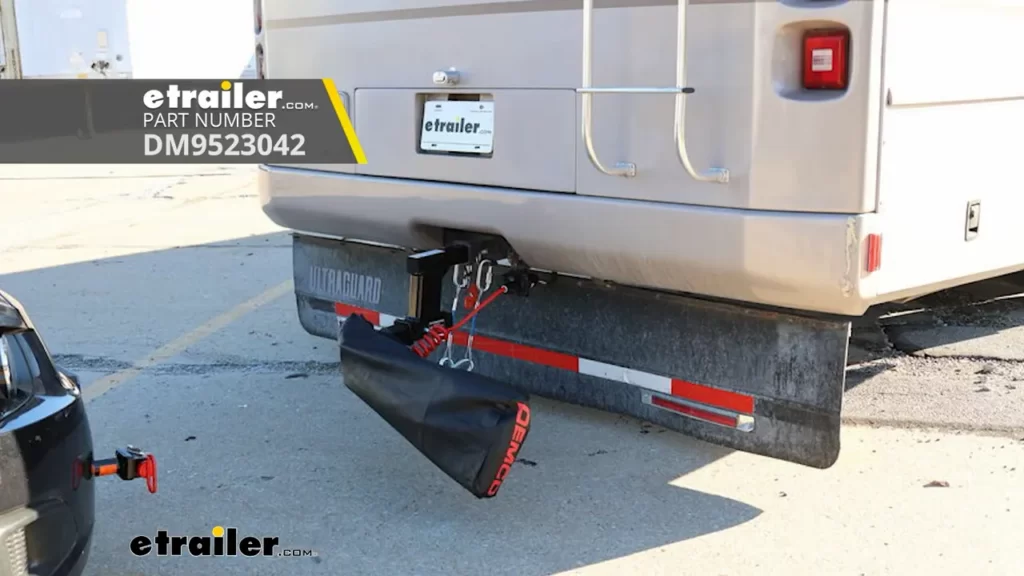To install a tow bar on a truck, first, you need to gather the necessary materials and tools. Then, follow these steps: position the tow bar, attach it to the truck’s bumper, secure the tow bar to the truck’s frame, and finally, connect the safety chains and lighting harness.
Now, let’s dive into the details. Tow bars are popular accessories for trucks, providing a convenient way to tow a trailer or another vehicle. Whether you need to tow a boat, camper, or simply want to have the option available, installing a tow bar on your truck can be a practical and cost-effective solution.
In this guide, we will walk you through the installation process step by step, ensuring that you can do it yourself without any complications. With a little bit of time and effort, you’ll be ready to hit the road with your truck and tow whatever you need with ease and confidence. So, let’s get started!
Choosing The Right Tow Bar
When it comes to towing, selecting the right tow bar for your truck is crucial for a safe and hassle-free experience. With a wide variety of options available on the market, it can be overwhelming to choose the perfect one. However, by considering a few key factors, you can make an informed decision that suits your towing needs.
Types of Tow Bars for Trucks
Before diving into the selection process, it’s important to understand the different types of tow bars available for trucks. Here are a few options you can consider:
| Tow Bar Type | Description |
|---|---|
| Rigid A-Frame | This type of tow bar is popular among truck owners due to its strength and durability. It consists of a rigid A-shaped frame that attaches to the front of the truck. |
| Self-Aligning Tow Bar | As the name suggests, self-aligning tow bars automatically center themselves, making it easier to connect the trailer to the truck. They are suitable for those who want a no-fuss towing experience. |
| Adjustable Tow Bar | Adjustable tow bars are perfect for those who own multiple vehicles of varying sizes. They offer flexibility in terms of length, allowing you to tow different trailers with ease. |
Factors to Consider When Selecting a Tow Bar
When selecting a tow bar, there are a few important factors that you should keep in mind:
- Towing Capacity: It is crucial to ensure that the tow bar you choose can handle the weight of the trailer you intend to tow. Check your truck’s towing capacity and select a tow bar that matches or exceeds it to ensure safety.
- Compatibility: Different tow bars are designed to fit specific truck models. Make sure to check the compatibility of the tow bar with your truck before making a purchase to avoid any installation issues.
- Installation Method: Consider whether you prefer a tow bar that requires permanent installation or one that can be easily removed when not in use. Permanent installations provide added strength and stability, while removable options offer convenience for occasional towing.
- Maintenance: Look into the maintenance requirements of the tow bar you are considering. Some tow bars may require regular lubrication or adjustments to ensure optimal performance. Choose one that aligns with your maintenance preferences.
- Budget: Set a budget for your tow bar purchase and explore the options within that range. Remember to consider the quality and features of the tow bar to ensure you get the best value for your money.
By considering these factors and understanding the different types of tow bars available, you can confidently choose the right tow bar for your truck. An appropriate tow bar will not only enhance your towing experience but also ensure the safety and security of your trailer on the road.
Preparing Your Truck For Tow Bar Installation
Before you can start attaching a tow bar to your truck, it’s crucial to ensure that your truck is ready for the installation process. Preparing your truck involves assessing its suitability for a tow bar and taking necessary steps to reinforce its frame if needed. In this section, we’ll guide you through the essential tools and materials needed for the installation, as well as assessing your truck’s readiness and the optional process of reinforcing its frame.
Ensure you have the following tools and materials ready before you begin installing a tow bar on your truck:

- Socket set
- Wrench set
- Measuring tape
- Drill
- Drill bits
- Paint marker
- Level
- Wire cutter/stripper
- Wire connectors
- Electrical tape
- Lubricant (optional)
Before installing a tow bar on your truck, it’s important to assess its readiness. Follow these steps:
- Examine your truck’s towing capacity. You can find this information in your truck’s owner’s manual or by consulting the manufacturer’s website.
- Check your truck’s rear bumper for a pre-drilled mounting bracket. Not all trucks have this bracket, but if your vehicle does, it will make the installation process easier.
- Measure the distance between your truck’s receiver hitch and the lowest point of the rear bumper. This will help you determine if the tow bar is compatible with your truck’s dimensions.
- Inspect the condition of the tow bar mounting points on your truck’s frame. Look for any signs of rust, damage, or wear. If you notice any issues, it’s important to address them before proceeding with the installation.
- Ensure that your truck’s electrical system is capable of supporting the additional wiring required for the tow bar. This may require adding a wiring harness if your vehicle doesn’t already have one.
In some cases, reinforcing your truck’s frame may be necessary to ensure the safe and secure installation of a tow bar. This step is particularly important if you plan on towing heavy loads or if your truck’s frame has signs of wear or damage.
If you choose to reinforce your truck’s frame, it is recommended to consult a professional or refer to your vehicle’s manufacturer guidelines for the specific steps and materials needed.
By properly preparing your truck for tow bar installation, you’ll be on your way to securely towing various trailers, campers, and other equipment. Now that you have the tools and knowledge to assess your truck’s readiness, as well as the option to reinforce its frame if necessary, you’re ready to move on to the next step in the installation process.
Installing The Tow Bar On Your Truck
Installing a tow bar on your truck is a straightforward process that can greatly expand the functionality of your vehicle. Whether you’re planning to tow a trailer, a boat, or any other heavy loads, a tow bar is an essential accessory. In this guide, we will take you through the step-by-step process of installing a tow bar on your truck, ensuring a secure and reliable connection for all your towing needs.
Step 1: Removing the Bumper
The first step in installing a tow bar on your truck is to remove the bumper. This will provide access to the mounting points and allow you to properly attach the tow bar brackets. To remove the bumper, follow these steps:
- Locate and remove the screws or bolts that secure the bumper to the truck frame.
- Have someone assist you in holding the bumper while you disconnect any wiring or other connections.
- Gently slide the bumper off the truck, being careful not to damage any components.
Step 2: Mounting the Tow Bar Brackets

With the bumper removed, you can now proceed to mount the tow bar brackets. These brackets will serve as the attachment points for the tow bar. Follow these steps to mount the brackets:
- Position the tow bar brackets on the truck frame, ensuring they are aligned with the mounting holes.
- Secure the brackets in place using the provided bolts and washers.
- Tighten the bolts to the recommended torque specifications, ensuring a secure fit.
Step 3: Attaching the Tow Bar to the Brackets
With the brackets securely mounted, it’s time to attach the tow bar. The tow bar will provide the connection point between your truck and the towed vehicle. Follow these steps to attach the tow bar to the brackets:
- Position the tow bar on the brackets, ensuring it is centered and aligned.
- Secure the tow bar to the brackets using the provided pins or bolts.
- Double-check the attachment to ensure a secure connection.
Step 4: Wiring the Tow Bar
Properly wiring the tow bar is crucial for safe and legal towing. Follow these steps to wire your tow bar:
- Identify the appropriate wiring connections on your truck and towed vehicle.
- Connect the necessary wiring harnesses or adapters, following the manufacturer’s instructions.
- Test the wiring connections to ensure all lights and signals are functioning properly.
Step 5: Securing the Tow Bar in Place
Once the tow bar is attached and wired, you need to secure it in place to prevent any movement during towing. Follow these steps to secure your tow bar:
- Ensure all bolts and connections are tightened to the recommended torque specifications.
- Place any included safety locks or pins to prevent accidental disconnection.
- Confirm that the tow bar is firmly in place by giving it a gentle tug.
By following these step-by-step instructions, you can successfully install a tow bar on your truck, providing a reliable and safe towing solution. Remember to consult your truck’s owner’s manual and the instructions provided by the tow bar manufacturer for any specific requirements. Now you’re ready to hit the road and enjoy the convenience and versatility of towing with your truck.
Testing And Safety Considerations
Once you have securely installed a tow bar on your truck, it is crucial to conduct testing and consider safety measures before hitting the road. This section will guide you through the necessary steps to ensure a reliable towing experience.
Ensuring the Tow Bar is Securely Installed

Before starting any testing, it is essential to double-check the installation of your tow bar to guarantee its stability and reliability. Follow these steps to ensure the tow bar is securely installed:
- Inspect the mounting brackets and make sure they are properly bolted to your truck’s frame. Using a torque wrench, tighten the bolts to the manufacturer’s recommended torque specifications to avoid any looseness during towing.
- Verify that the tow bar’s coupler is securely latched onto the ball hitch of your truck. Apply downward pressure on the coupler to confirm that it is locked in place.
- Check all the safety chains and ensure they are attached to the tow bar and the truck. The chains should have enough slack to allow smooth turns but should not drag on the ground.
- Inspect the electrical connections between your truck and the towed vehicle. Make sure they are properly plugged in and functional, including the brake lights, turn signals, and taillights.
Conducting a Test Drive and Adjustments if Needed
After confirming a secure installation, it is time to conduct a test drive to ensure that everything is functioning properly. Follow these steps:
- Drive your truck and towed vehicle on a quiet road to familiarize yourself with the towing setup and its handling characteristics.
- Gradually increase your speed while paying attention to any unusual noises, vibrations, or swaying movements. If you notice anything out of the ordinary, pull over safely and inspect the tow bar and connections for any issues.
- If adjustments are needed, refer to the tow bar’s user manual for guidance on adjusting components such as the tow bar height, the angle of the towed vehicle, or the tension on the safety chains.
Safety Precautions and Tips When Towing
While towing, it is crucial to prioritize safety to protect yourself, your vehicle, and other road users. Keep these safety precautions and tips in mind:
- Always adhere to the weight limits specified by both your truck and the tow bar manufacturer. Overloading can lead to dangerous handling and braking issues.
- Avoid sudden maneuvers or excessive speed while towing. Maintain a safe and steady speed, allowing for longer stopping distances and increased braking time.
- Regularly inspect and maintain your tow bar, including lubricating moving parts and checking for signs of wear or damage. Regular maintenance ensures optimal performance and prolongs the lifespan of the equipment.
- Practice defensive driving when towing, as the additional weight can affect your truck’s maneuverability and visibility. Use your mirrors frequently and always signal your intentions.
- Be mindful of the increased braking distance required when towing. Leave ample space between your truck and the vehicle in front of you to account for the additional weight.
By following these testing and safety considerations, you can ensure a secure tow bar installation and enjoy a safe towing experience with your truck.
Faqs And Troubleshooting Common Issues
As you prepare to install a tow bar on your truck, it’s important to familiarize yourself with some FAQs and troubleshooting common issues that may arise during the process. In this section, we will address questions related to the towing capacity of your truck with a tow bar, the compatibility of a tow bar with a lift kit, and troubleshooting electrical issues that you may encounter with the tow bar wiring.
What is the towing capacity of my truck with a tow bar?

Before installing a tow bar on your truck, it is essential to determine the towing capacity of your vehicle. The towing capacity refers to the maximum weight that your truck can safely tow when equipped with a tow bar. To find the towing capacity, you can refer to your truck’s owner’s manual or consult the manufacturer’s specifications. These resources will provide you with the necessary information to ensure that you do not exceed your truck’s towing capacity, which could lead to dangerous situations on the road.
Can I install a tow bar on a truck with a lift kit?
Installing a tow bar on a truck with a lift kit requires careful consideration. The lift kit raises the truck’s suspension, altering its height and potentially affecting the positioning and functionality of the tow bar. To determine whether you can install a tow bar on a truck with a lift kit, it is recommended to consult with a professional mechanic or refer to the tow bar manufacturer’s guidelines. They can provide expert advice and guidance on whether modifications or adjustments need to be made to accommodate the lift kit and ensure the proper installation and usage of the tow bar.
How do I troubleshoot electrical issues with the tow bar wiring?
Electrical issues can sometimes arise when installing a tow bar, particularly related to the wiring. To troubleshoot these issues, follow these steps:
- Check the connections: Ensure that all electrical connections between the tow bar and your truck are secure and properly connected. Loose or faulty connections can cause issues with the functionality of the tow bar’s electrical components.
- Inspect the wiring harness: Examine the wiring harness for any signs of damage, such as frayed wires or corrosion. If any issues are detected, it is recommended to replace the damaged wiring harness to prevent further electrical problems.
- Test the electrical components: Use a multimeter to test the functionality of the electrical components, such as the turn signals, brake lights, and taillights. If any of these components are not working as expected, it may indicate a problem with the wiring or the tow bar’s control module.
- Seek professional assistance: If you are unable to troubleshoot the electrical issues on your own, it is advisable to seek assistance from a qualified technician or an auto repair shop with experience in tow bar installations. They will have the necessary expertise and tools to diagnose and resolve any electrical problems with the tow bar wiring.
By addressing these frequently asked questions and common troubleshooting issues, you’ll be better prepared to successfully install a tow bar on your truck and ensure its proper functionality. Remember to always follow the manufacturer’s instructions and guidelines, and when in doubt, seek professional assistance to avoid any potential complications or safety hazards.
Frequently Asked Questions Of How To Install A Tow Bar On A Truck
Can I Install Tow Bar By Myself?
Yes, you can install a tow bar by yourself, but it is important to follow manufacturer instructions, have basic mechanical knowledge, and use proper tools.
How Are Tow Bars Attached?
Tow bars are attached by experts who secure them to the frame of the vehicle using bolts and brackets. They ensure a strong connection to ensure safety while towing.
What Is The Difference Between A Tow Bar And A Tow Hitch?
A tow bar is a device that connects the towed vehicle to the towing vehicle, while a tow hitch is the receiver-like structure mounted on the towing vehicle. A few distinct differences include their installation process, weight capacity, and compatibility with different vehicles.
Where Does A Tow Bar Attach?
A tow bar attaches to the rear of a vehicle, providing a secure connection for towing purposes. The attachment point is typically located underneath the vehicle’s bumper.
Conclusion
Installing a tow bar on your truck doesn’t have to be a complicated task. By following the step-by-step instructions outlined in this blog post, you can easily attach a tow bar and get ready for your towing adventures. Remember to choose a high-quality tow bar, double-check all the connections, and always prioritize safety.
With this knowledge in hand, you’ll be well-equipped to handle any towing needs that come your way. Safe travels!
